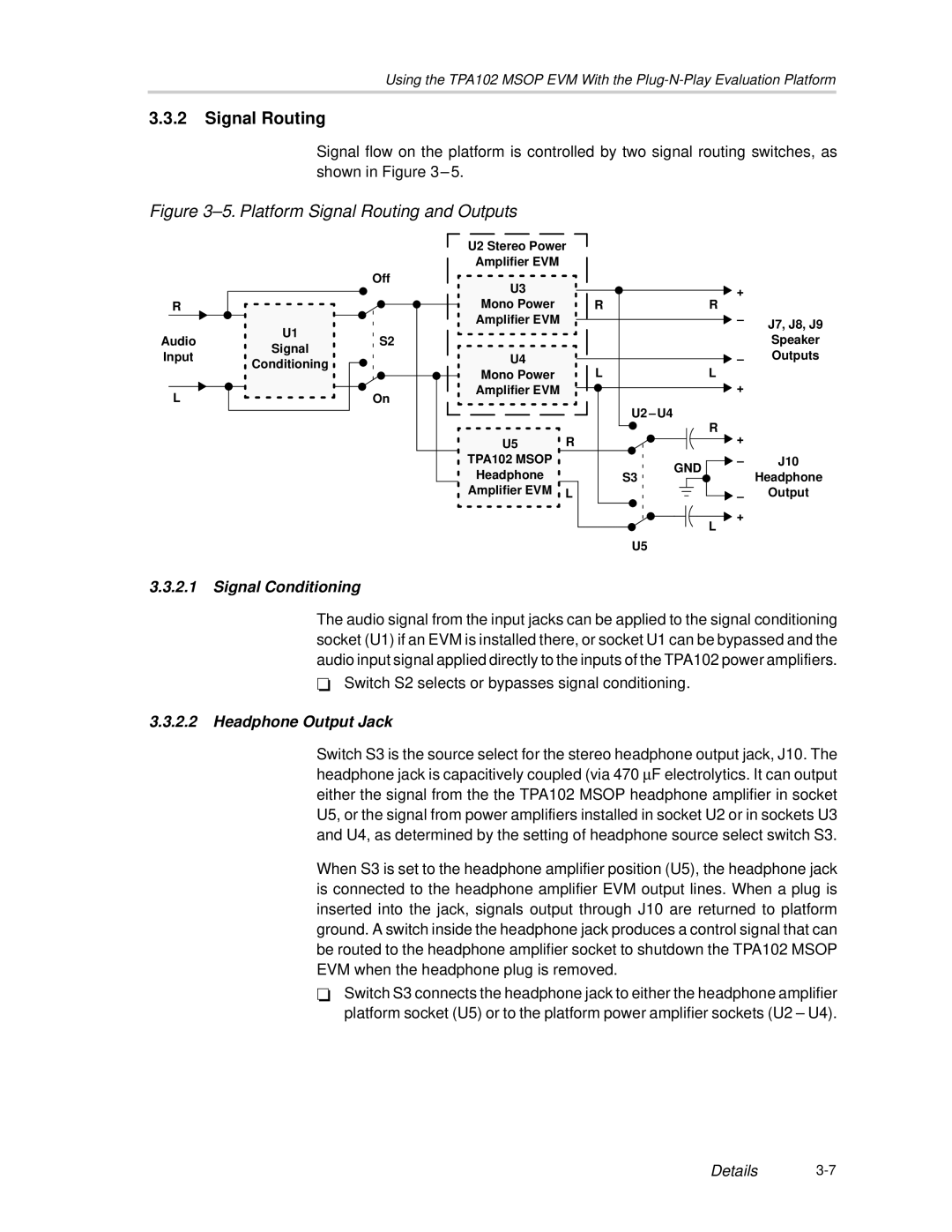TPA102 MSOP specifications
The Texas Instruments TPA102 is a highly efficient class-D audio amplifier designed specifically for portable applications, making it an ideal choice for devices like smartphones, tablets, and other battery-operated electronics. One of its standout features is its ability to deliver powerful output while maintaining a small footprint, thanks to its MSOP (Micro Small Outline Package) design. This compact packaging allows designers to implement the TPA102 in space-constrained environments without sacrificing performance.A key characteristic of the TPA102 is its efficient power consumption. The amplifier is capable of delivering substantial output power with minimal distortion, which is critical for ensuring high-quality audio playback. It supports a wide range of supply voltages, typically from 2.5V to 5.5V, making it versatile for various applications. With a typical output power of 1W into an 8-ohm load, the TPA102 excels in delivering clean audio signal without considerable heat generation, which is particularly beneficial in battery-powered devices where thermal management can be a challenge.
The TPA102 incorporates several innovative technologies that contribute to its performance. One such technology is the elimination of output filter components, which simplifies the design and reduces the overall cost. Additionally, the device features integrated protection mechanisms that prevent overheating and short-circuiting, thereby enhancing reliability. This combination of efficiency and durability makes the TPA102 suitable for rugged and demanding audio applications.
Another impressive aspect of the TPA102 is its low total harmonic distortion (THD), which ensures that the audio signal remains clear and true to the original input. Coupled with an excellent signal-to-noise ratio, the TPA102 is designed to provide an immersive listening experience in various audio setups.
Moreover, the TPA102 supports multiple operating modes, including shutdown mode that significantly reduces power consumption when the device is not in use. This feature is especially beneficial in portable applications where battery life is a crucial consideration.
In summary, the Texas Instruments TPA102 MSOP audio amplifier stands out for its compact size, efficient power consumption, and high-quality audio output. With advanced features and robust protection mechanisms, it is a reliable choice for designers seeking to develop cutting-edge audio solutions in portable devices.

